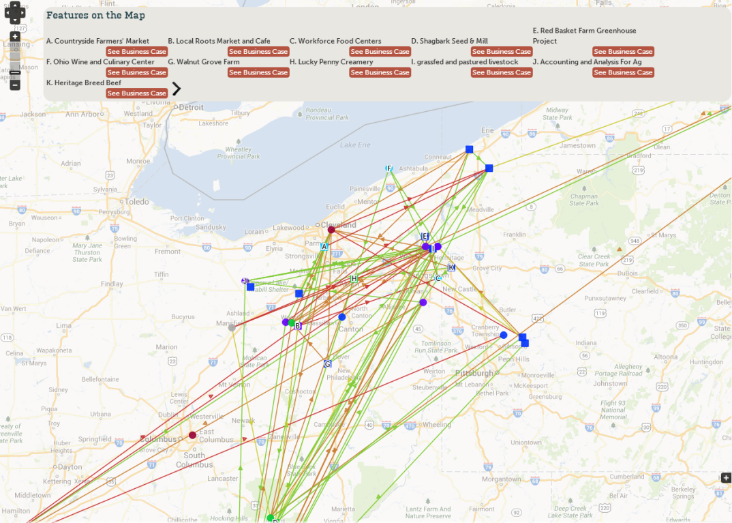On February 25, the NEOSCC Board voted unanimously to approve and endorse the Vibrant NEO 2040 Vision, Framework and Action Products. We are sharing an “Initiative A Day” so you can gain a better understanding of the vision and framework! If you would like to read all of the Initiatives, you can download them here: Recommendation and Initiatives. You can access a pdf of the entire vision chapter here. The vision chapter contains all 41 initiatives, development strategies, indicators, and matrices that identify how the recommendations, initiatives and indicators all relate.
Show your support for Vibrant NEO 2040 by adding your name to our Champions of Vibrant NEO 2040 list here.
Initiative 8.4: Support the work of local food initiatives to share best practices and identify policies of regional significance.
WHAT THIS MEANS. Robust community organization and development initiatives are taking shape nationwide around issues of food access, food security, and local foods cultivation and distribution systems. An emerging organizational form that gives expression to this is the food policy council, often a non-profit organization or coalition of interested public and private stakeholders. Such councils have been formed for everything from neighborhoods and districts to entire multi-county regions. Most of Northeast Ohio’s food policy councils are formed at the county level. Six food policy councils are in existence in the region, in Cuyahoga, Lake, Lorain, Mahoning, Summit, and Trumbull counties. Food policy councils serve a variety of roles, depending on how they are constituted and the robustness of their funding. At the most basic level, food policy councils evaluate barriers to local food cultivation and access; at their most sophisticated, they offer training and act as “chambers of commerce” for enterprises within the local food supply chain. The Cleveland Cuyahoga Food Policy Coalition (CCFPC) is an example of one such wide-spectrum organization. Convened by a partnership of the Ohio State University Extension and Case Western Reserve University, the organization has engaged City and County officials along with multiple non-profit organizations, businesses, and active farming operations.
WHY THIS IS IMPORTANT. Like other initiatives highlighted above, engaging and encouraging local food policy councils can yield a host of benefits to communities, including healthier citizens, wealth creation, and vacant land reuse. By coordinating regionally, the pace by which innovations are refined into best practices can be accelerated.
GETTING IT DONE. This initiative requires leadership from both the government and non-profit sectors. Local governments and land banks could provide funding or in-kind resources to assist with land acquisition and remediation, or with securing grants from federal and state agencies. Regional collaboration and best practices dissemination should be led by partnerships of the Ohio State University and local universities in Northeast Ohio counties, taking cue from the successful organizational structure of the Cleveland Cuyahoga Food Policy Coalition. With Ohio State University Extension as the element of continuity, best practices could be readily shared region- and state-wide, connecting county-level food policy councils into a broader community of practice.
| Lead | Food Policy Councils; Ohio State University Extension, Universities; Municipalities, Townships, Counties |
| Target Community | Strategic investment areas, asset risk areas, cost risk areas |
| Implementation Complexity | Moderate |
These recommendations, initiatives, and products, are not one-size-fits all and some aspects of the initiatives won’t be applicable everywhere in the 12-county region. The Vibrant NEO 2040 Vision, Framework and Products are intended inspire and guide decision-making at the Metropolitan Planning Organization (MPO), Council of Government, and local levels to ensure that land use, transportation, and environmental considerations are simultaneously addressed by their processes. Ultimately, the implementation of Vibrant NEO 2040 is up to Northeast Ohio’s communities and residents. But regardless of the applicability of each initiative to any particular part of the region, the goal for each community within the Vision is the same: stability, prosperity, and a high quality of life for all of its residents.

